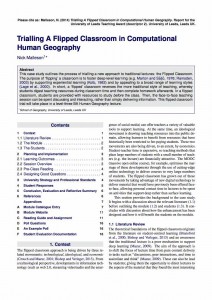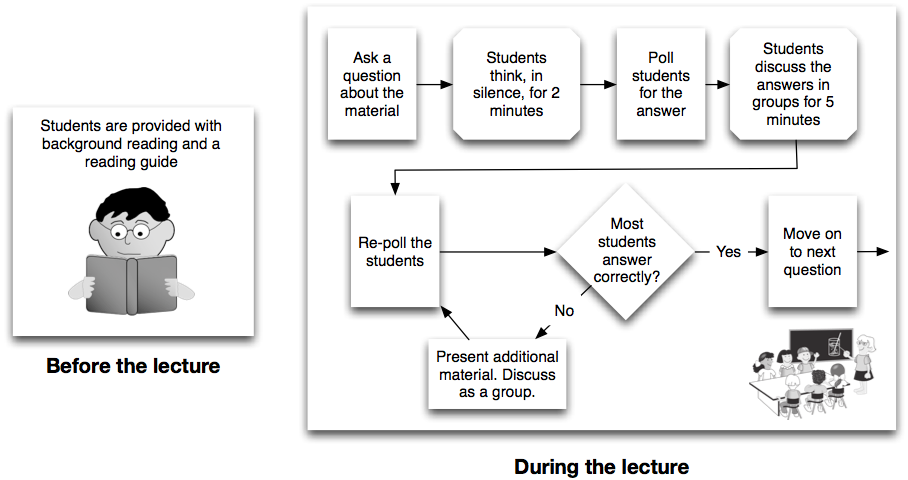Trialling A Flipped Classroom in Computational Human Geography

I have recently completed a report into a trial of a ‘flipped classroom’ session for a group of third-year BA Human Geography students. If anyone is interested in using this technique, the report might be of use.
You can download the full report here.
Abstract
This case study outlines the process of trialling a new approach to traditional lectures: the Flipped Classroom. The purpose of ‘flipping’ a classroom is to foster deep-level learning (e.g. Marton and Sa ̈ljo ̈, 1976; Ramsden, 2003) by supporting experiential learning (Kolb, 1983) and by appealing to a broad range of learning styles (Lage et al., 2000). In short, a ‘flipped’ classroom reverses the more traditional style of teaching, whereby students digest teaching resources during classroom time and then complete homework afterwards. In a flipped classroom, students are provided with resources to study before the class. Then, the face-to-face teaching session can be spent discussing and interacting, rather than simply delivering information. This flipped classroom trial will take place in a level-three BA Human Geography lecture.

